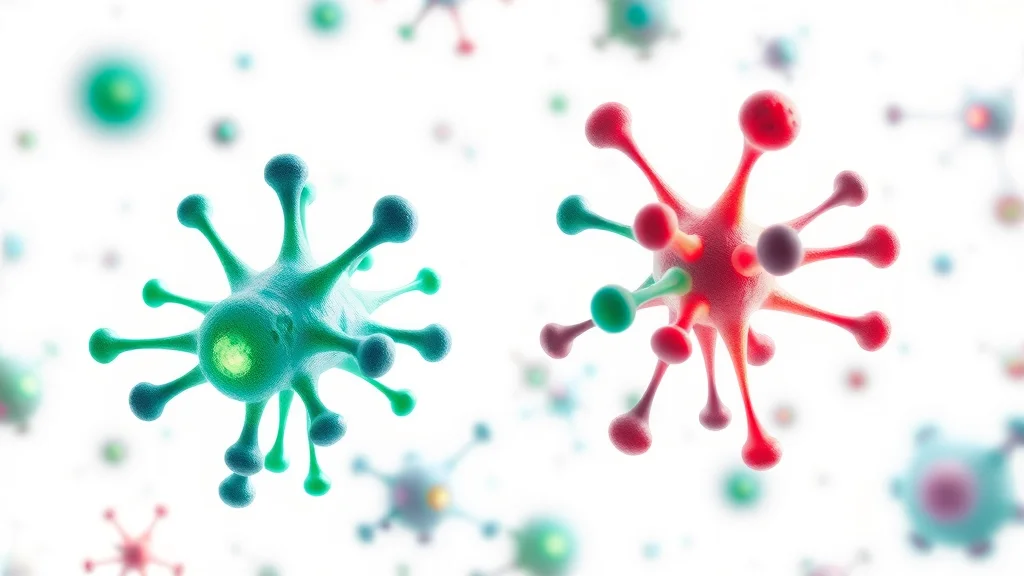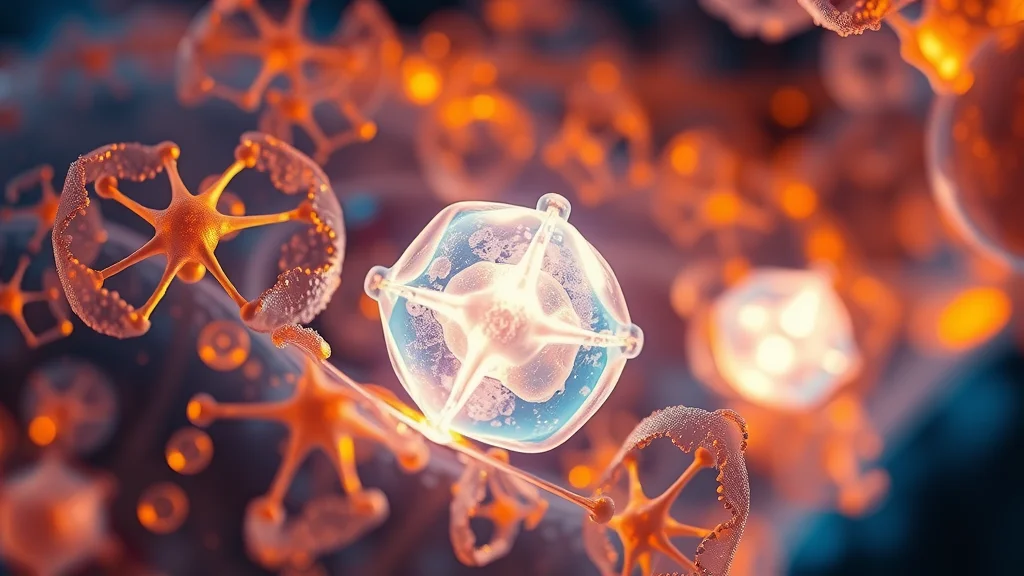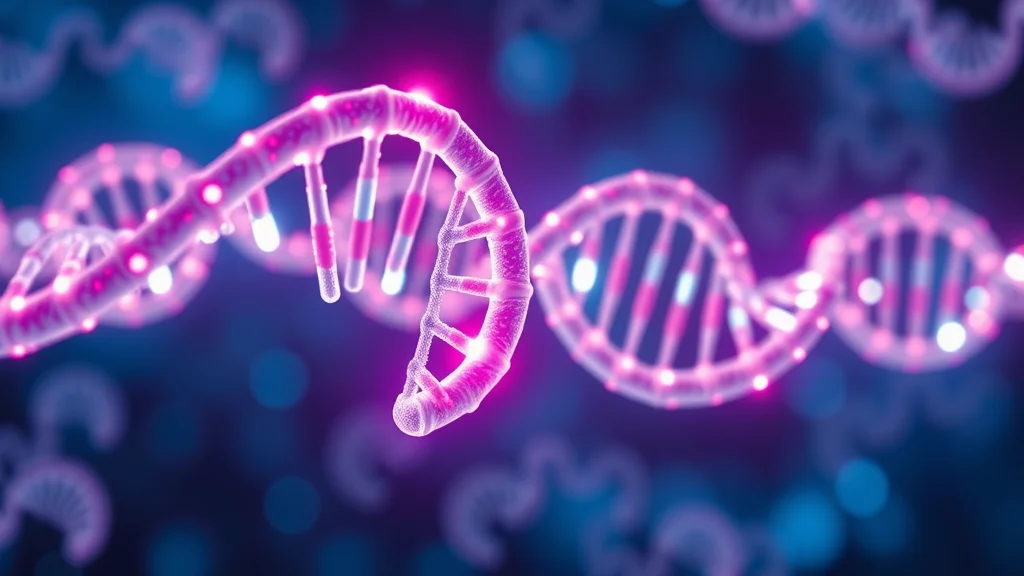Did you know? Scientists now estimate that the average person’s mitochondria—the body’s cellular powerhouses—lose more than half their function by middle age, potentially setting the stage for everything from fatigue to serious disease. New longevity research is uncovering surprising connections between mitochondrial health and how well we age, revealing that optimized mitochondrial function could be the secret to a longer, healthier life. This article dives into the cutting-edge discoveries, demystifies the science, and equips you with actionable insights for vibrant health and resilience at any age.
Unlocking Mitochondrial Health: Surprising Insights from Longevity Research
In recent years, the scientific community has shifted its focus toward the remarkable impact of mitochondrial health on the human lifespan. Once considered just the “power plants” of the cell, mitochondria are now recognized as crucial regulators of cellular function, responsible not only for energy production but also for moderating oxidative stress, supporting DNA repair, and signaling cellular quality control. Longevity research is illuminating how declines in mitochondrial function are tightly linked to conditions such as cardiovascular disease, neurodegeneration, and even decreased physical and mental performance. As scientists unravel more about the mitochondrial network, it is becoming clear that supporting healthy mitochondria is a cornerstone of disease prevention and healthy aging.
What's truly surprising is that many of the changes contributing to aging—such as increased production of reactive oxygen species (ROS), accumulation of oxidative damage, and impaired ATP production—stem from mitochondrial dysfunction. Recent human and animal studies reveal that interventions aimed at restoring or enhancing mitochondrial health, from nutritional changes to targeted supplements and lifestyle adjustments, may reverse age-related decline in energy and resilience. By understanding how the electron transport chain, mitochondrial DNA, and the intricate mitochondrial membrane all interplay, readers can make informed choices that may extend not only their years but also their vitality.

A Startling Statistic: The Role of Mitochondrial Health in Aging
Multiple studies now confirm that by age 60, mitochondrial efficiency can drop by as much as 50% compared to young adulthood. This staggering loss in function has resounding impacts across the body’s major organ systems, from muscle cell deterioration to the brain’s declining cognitive power. By spotlighting statistics like these, scientists are urging a fundamental shift in how we view aging—not as an unavoidable decline, but as a process we can influence through improved mitochondrial care. The role of mitochondrial health has truly emerged as the linchpin linking lifestyle choices and exposure to environmental stressors with the trajectory of aging, making it one of the most urgent frontiers in medical science.
As research delves deeper, it becomes increasingly evident that mitochondrial dysfunction is at the core of many chronic illnesses, especially those that manifest later in life. Poor energy regulation, rising ROS production, and impaired quality control mechanisms collectively promote cellular aging and even apoptosis or cell death. This highlights a crucial point: focusing on mitochondrial health is not just about adding years to your life—it’s about maintaining the quality and function of your cells, organs, and overall vitality.
What Drives Our Understanding of Mitochondrial Health?
Our evolving comprehension of mitochondrial health is driven by rapid advancements in biochemical and genetic research. Scientists now use sophisticated imaging and genomic sequencing to map sources of mitochondrial damage, monitor ATP and ROS production, and track the real-time impact of dietary and environmental interventions. These technologies have helped clarify the direct links between mitochondrial health and cell signaling, inflammation, energy metabolism, and DNA damage.
Furthermore, longitudinal studies on populations with unusually high longevity—such as centenarians—consistently find fewer signs of mitochondrial dysfunction and less DNA damage compared to age-matched peers. The growing field of functional medicine is also contributing, offering practical, holistic frameworks for assessing and improving mitochondrial function through nutrition, lifestyle modification, and targeted supplementation. Together, these efforts are transforming what was once a murky topic into a vibrant, hopeful area with immense real-world potential.
What You'll Learn: Key Concepts in Mitochondrial Health and Disease
The latest research connecting mitochondrial health with longevity
How mitochondrial function is linked to overall health and disease
Evidence-based strategies to improve mitochondrial health
Nutritional and lifestyle factors impacting mitochondrial biogenesis
Emerging therapies and their reliability

Mitochondrial Health: The Foundation of Cellular Function
Understanding Mitochondria and Their Role in Cellular Function
Mitochondria are often called the “powerhouses” of the cell, and for good reason: they generate most of the cell’s ATP (adenosine triphosphate), the molecule that stores and supplies energy for countless bodily processes. But their influence goes even further. Mitochondria help regulate cellular metabolism, support quality control by removing damaged proteins, and are deeply involved in cell signaling, especially in response to stress. For processes like cell growth, apoptosis, and tissue repair, healthy mitochondria are essential.
These dynamic organelles are also unique in that they hold their own genetic material—mitochondrial DNA—separate from the cell’s nuclear DNA. This DNA controls genes crucial for the electron transport chain and for maintaining a stable ‘mitochondrial network.’ If mitochondrial DNA suffers from oxidative damage (often from ROS or free radicals), it can lead to cascading problems such as hindered energy production, increased oxidative stress, and even more DNA mutations. Healthy mitochondrial function, therefore, acts as a bulwark against disease and supports overall resilience in every organ system, from muscles to the brain.
How Mitochondrial Function Maintains Health and Disease Balance
Cellular health largely depends on a well-balanced, efficient mitochondrial network. When mitochondria work efficiently, they facilitate robust energy production, resist oxidative stress, and maintain proper communication between cellular compartments. This protective effect plays an outsize role in preventing chronic health conditions such as metabolic disorders, neurodegenerative disease, and cardiovascular disease.
Conversely, when the electron transport chain becomes less efficient—often due to aging or chronic lifestyle-related stressors—there’s an uptick in ROS production and a simultaneous dip in ATP yields. This imbalance not only impairs muscle and nerve function but can create a vicious cycle of oxidative damage, inflammation, and DNA mutations. Proactively supporting mitochondrial health is therefore about more than just “more energy.” It’s about protecting the cellular environment, keeping the internal cell machinery smooth, and fending off disease at its source.

Demystifying Mitochondrial Function: Energy, Longevity, and Health
How Mitochondrial Function Influences Longevity
A growing body of longevity studies underlines a pivotal finding: individuals with robust mitochondrial function tend to experience not only longer life but also more years of high-quality health. Mitochondria affect every aspect of the aging process, from the decline in physical strength to cognitive slowing seen with age. This relationship is evident through the lens of ATP production: reduced output translates into muscle fatigue, loss of endurance, and impaired organ system performance.
Further, mitochondria regulate the cell’s ability to adapt to stress—whether that be an infection, dietary shift, or environmental toxin—by activating defensive genetic and biochemical pathways. This adaptability is crucial for resilient aging. Modern research indicates that lifestyle interventions, such as intermittent fasting and regular exercise, promote the creation of healthy mitochondria and may even slow or reverse some markers of cellular aging. In essence, mitochondria do not just determine how much energy we have; they help dictate how gracefully we age.
Mitochondrial Biogenesis: Generating Healthy Mitochondria
The concept of mitochondrial biogenesis refers to the process by which new mitochondria are created within cells—a mechanism central to the cell’s adaptation and renewal. This process can be ramped up by certain forms of exercise, calorie restriction, and specific nutrients such as polyphenols and omega-3 fatty acids. Effective biogenesis helps to replace damaged mitochondria with newer, more efficient organelles, thereby supporting steady energy production and resilient cellular function.
Emerging research shows that signals regulating biogenesis are highly sensitive to environmental factors—meaning they can be influenced consciously through daily habits. Disruptions in mitochondrial biogenesis, on the other hand, play a major role in both premature aging and the onset of degenerative diseases. Thus, learning how to harness this process is a key strategy for anyone seeking improved mitochondrial health, longevity, and quality of life.
Mitochondrial Dysfunction: The Hidden Trigger of Age-Related Conditions
The Science of Mitochondrial Dysfunction in Health and Disease
When mitochondria falter, the effects ripple out across every cell, tissue, and organ system. Mitochondrial dysfunction is now recognized as a common denominator in a wide range of chronic illnesses, including metabolic syndrome, neurodegenerative disorders like Alzheimer’s and Parkinson’s, and cardiovascular disease. Hallmarks of dysfunction include excessive ROS and free radical generation, impaired ATP production, and increased susceptibility to cellular injury and inflammation.
Cellular stressors such as environmental toxins, poor diet, physical inactivity, and chronic infections can overwhelm mitochondria, resulting in cumulative oxidative damage to both mitochondrial and nuclear DNA. This chronic stress environment sabotages the normal processes of energy metabolism, quality control, and cellular repair, hastening the body’s decline into disease. By identifying and addressing these dysfunctions early, it becomes possible to improve not only mitochondrial function but also systemic health and longevity.

Oxidative Stress: The Connection to Mitochondrial Dysfunction
Oxidative stress occurs when there’s an excess of reactive oxygen species—often originating from overloaded mitochondrial function or a weakened antioxidant defense system. This imbalance is central to the process of mitochondrial dysfunction, leading to ongoing oxidative damage to mitochondrial DNA, disruption of the electron transport chain, and progressively deteriorating cellular function. Left unchecked, oxidative stress accelerates aging, impairs tissue function, and amplifies the risk for diseases such as cancer and diabetes.
Fortunately, mitigation strategies abound. Antioxidants found in nutrient-rich foods, as well as specific lifestyle choices like stress management and regular sleep routines, play a critical role in reducing oxidative stress. These protective approaches can stabilize the mitochondrial membrane, maintain quality control, and reduce ROS production. Developers of new therapies for aging and chronic disease increasingly view oxidative stress reduction as the linchpin to rebalancing mitochondrial health and staving off early decline.
Healthy Mitochondria vs. Dysfunctional Mitochondria: The Cellular Impact
The distinction between healthy mitochondria and dysfunctional ones becomes stark at the cellular level. Healthy mitochondria are characterized by intact membranes, robust ATP output, and regulated ROS emissions. They contribute to steady muscle cell contraction, clear brain signaling, and efficient organ system function. Dysfunctional mitochondria, by contrast, exhibit swollen or fragmented membranes, failed ATP production, and heightened oxidative damage, resulting in muscle fatigue, cognitive lapses, and hormonal imbalances.
Recent developments in microscopy and molecular biology have allowed scientists to visualize these differences in high resolution. Such technology confirms what patients often feel: as mitochondrial health wanes, energy levels drop, and the risk for disease rises. Protecting and rejuvenating the mitochondrial network is thus one of the most effective ways to preserve youthful performance, immune vigor, and overall health and disease resistance as we age.
What New Longevity Studies Reveal About Mitochondrial Health
Landmark Studies on Mitochondrial Health and Longevity
Several recent, large-scale studies have made headlines by confirming the pivotal link between mitochondrial integrity, resilience, and healthy aging. Among the most well-cited research is the analysis of so-called “long-lived populations,” which rigorously demonstrates that these groups maintain superior mitochondrial biogenesis, lower markers of oxidative damage, and more consistent ATP production into advanced age. Controlled human trials are now showing that even modest interventions—such as daily exercise, plant-based nutrition, and specific supplementation—can measurably improve mitochondrial health markers within weeks to months.
Additionally, animal studies have revealed that restoration or preservation of mitochondrial function correlates with significant extension of lifespan and healthspan, further solidifying the evidence base. Researchers are now using these findings to design new, targeted therapies that address mitochondrial dysfunction at a cellular and genetic level, offering fresh hope for combating age-related degenerative disorders and enhancing life expectancy.

Recent Advances in Mitochondrial Biogenesis Research
Biogenesis research is advancing at breathtaking speed, uncovering the intricate molecular mechanisms by which new mitochondria are generated. A highlight from recent studies includes the discovery that certain transcription factors, such as PGC-1α, serve as master regulators of mitochondrial “renewal” in response to physical activity and cold exposure. Such findings have implications not only for athletic performance but also for slowing many degenerative processes seen in aging.
A number of clinical trials are now testing molecules and dietary supplements—like nicotinamide riboside and coenzyme Q10—for their capacity to safely trigger mitochondrial biogenesis in humans. Although long-term results are still pending, the prospects are promising. These advances are quickly moving the science of mitochondrial health from the laboratory into actionable lifestyle recommendations and medical interventions.
Genetic and Epigenetic Factors Affecting Mitochondrial Function
Genetics play a significant role in one’s baseline mitochondrial efficiency, as do “epigenetic” factors—those shaped by lifestyle and environment. Certain rare mutations can disrupt the electron transport chain or render the mitochondrial membrane less stable, leading to inherited mitochondrial disorders. But more common, subtle shifts—such as changes in gene expression driven by diet, toxins, or stress—also powerfully shape mitochondrial health in the general population.
Epigenetic research suggests that choices you make every day—from what you eat to how you manage stress—can “switch on” genes that foster mitochondrial biogenesis, resilience, and efficient ATP output. This means mitochondrial health is far from predetermined; it is a dynamic, malleable system highly responsive to environmental cues and personal choices, and that holds extraordinary promise for disease prevention and healthy aging.

The Interplay Between Mitochondrial Health and Chronic Disease
Chronic illnesses such as diabetes, obesity, cardiovascular disease, and neurodegeneration all share a core pathology: deteriorating mitochondrial function. As mitochondria struggle, ROS and oxidative stress rise, metabolic flexibility drops, and cells lose the ability to regenerate and repair. This interconnectedness is particularly apparent in high-energy-demand tissues, like the brain, liver, and muscles, where energy shortages and oxidative damage quickly translate into symptoms.
It is now clear that addressing mitochondrial dysfunction through lifestyle change, medical management, and targeted therapies can favorably alter the course of many common diseases. Mitochondrial health, in effect, acts as a global lever for improving nearly every aspect of wellness, from immune resilience to cognition, emotional health, and longevity.
Comparative Overview: Healthy vs. Dysfunctional Mitochondria | ||
Feature |
Healthy Mitochondria |
Dysfunctional Mitochondria |
|---|---|---|
ATP Production |
High, stable |
Low, inconsistent |
Reactive Oxygen Species |
Minimal, well-regulated |
Excessive, uncontrolled |
DNA Integrity |
Maintained, efficient repair |
Frequent mutations, poor repair |
Membrane Structure |
Intact, fluid |
Swollen, compromised |
Cellular Impact |
Robust energy, low inflammation |
Fatigue, inflammation, disease risk |
Key Findings from Recent Longevity Studies on Mitochondrial Health | ||
Study |
Key Outcome |
Implication |
|---|---|---|
Centenarian Population Study |
Lower mitochondrial DNA damage, higher ATP levels |
Supports link between mitochondrial health and lifespan |
Clinical Exercise Trial |
Exercise increased mitochondrial biogenesis markers |
Endorses physical activity for healthy aging |
Antioxidant Supplement Study |
Reductions in oxidative stress, improved mitochondrial function |
Suggests evidence-based supplements can assist mitochondrial repair |
How to Improve Mitochondrial Health: Evidence-Based Approaches
Nutritional Strategies to Support Healthy Mitochondria
Nutrition sits at the heart of mitochondrial health. Foods rich in antioxidants—such as colorful berries, leafy greens, nuts, and seeds—directly support the body’s ability to neutralize oxidative stress and repair mitochondrial DNA. Specific nutrients like B vitamins, coenzyme Q10, omega-3 fatty acids, and polyphenols (found in green tea, turmeric, and dark chocolate) have been shown to enhance mitochondrial biogenesis, stabilize the mitochondrial membrane, and improve energy production.
Research confirms that diets high in refined sugar, processed grains, and unhealthy fats can damage mitochondria, triggering not only oxidative stress but also impairments in the electron transport chain that leads to tissue fatigue and poor systemic function. Instead, adopting a Mediterranean or plant-forward diet has been associated with greater resilience, lower inflammation, and improved mitochondrial network integrity.

Exercise and Its Effect on Mitochondrial Biogenesis
Physical activity is one of the most powerful triggers for mitochondrial biogenesis. Aerobic exercises—such as brisk walking, cycling, swimming, and jogging—stimulate the growth of new, healthy mitochondria in both muscle and other high-energy tissues. Resistance training and high-intensity interval training (HIIT) also boost mitochondrial density while fortifying the electron transport chain, thereby offering a twofold benefit: improved ATP production and enhanced resilience against oxidative damage.
Regular exercise increases the expression of genes associated with mitochondrial quality control and renewal, reducing the risks of dysfunction over time. Even moderate, consistent movement—like daily walking or gardening—provides significant protective effects. For optimal mitochondrial health, experts recommend at least 150 minutes of moderate-intensity exercise weekly, combined with strength-building activities twice per week.

Targeting Oxidative Stress for Improved Mitochondrial Function
Combatting oxidative stress is a central pillar of any strategy to improve mitochondrial health. This means amplifying the intake of antioxidant-rich foods (like dark leafy greens, bell peppers, and berries) and, if needed, supplementing with targeted antioxidants such as alpha-lipoic acid, N-acetyl-cysteine, and vitamin E. These nutrients directly reduce DNA damage, stabilize the mitochondrial membrane, and restore efficient ATP output.
Equally important are lifestyle habits that curb ROS production: regular, restorative sleep, effective stress management, and avoiding environmental toxins (such as cigarette smoke and heavy metals). By stacking these supportive actions, individuals can meaningfully reduce oxidative stress and set the stage for long-term, optimal mitochondrial function.
Functional Medicine Approaches to Enhance Mitochondrial Health
The field of functional medicine emphasizes personalized, root-cause strategies to support all aspects of mitochondrial energy metabolism. Practitioners combine detailed nutrition and lifestyle assessments with advanced laboratory testing to pinpoint specific mitochondrial bottlenecks. Treatment protocols often include detoxification support, gut health optimization, and the use of mitochondrial-targeted supplements—such as magnesium, L-carnitine, and riboflavin.
Functional medicine practitioners also focus on repairing the body’s stress-adaptation systems, including supporting adrenal and thyroid function, balancing blood sugar, and minimizing chronic inflammation. This comprehensive, individualized approach ensures maximum restoration of mitochondrial health for all ages and all stages of wellness.
Top lifestyle habits and supplements to improve mitochondrial health:
Regular exercise, especially aerobic and strength training
High intake of antioxidant-rich plants and healthy fats
Adequate sleep and stress management
Supplementation with coenzyme Q10, magnesium, and B vitamins (as needed)

List of nutrients and foods shown to repair mitochondria:
Leafy greens, berries, nuts, and seeds
Wild-caught fatty fish (salmon, sardines)
Avocado, olive oil, and coconut oil
Fermented foods and green tea
Dark chocolate (in moderation)
“Mitochondrial health is emerging as the centerpiece in the maintenance of cellular function and the prevention of disease.” – Noted longevity researcher
“Optimizing mitochondrial biogenesis can fundamentally shift our trajectory for healthy aging.” – Leading functional medicine expert
People Also Ask: Answering the Top Questions About Mitochondrial Health
How do you keep your mitochondria healthy?
Maintaining strong mitochondrial health involves a combination of nourishing the body with antioxidant-rich whole foods, engaging in regular exercise, and minimizing exposure to environmental toxins and chronic stress. Consistent physical activity, especially aerobic and resistance-based workouts, triggers mitochondrial biogenesis and improves energy production. Complement this with adequate sleep, balanced nutrition—including plenty of leafy greens, fatty fish, nuts, and seeds—and targeted supplementation as needed. Prioritizing restorative routines and regular medical checkups further helps monitor and maintain optimal mitochondrial function throughout life.
Expert-Backed Habits for Sustaining Mitochondrial Health
Research and expert consensus highlight several daily habits for sustaining healthy mitochondria. These include eating a Mediterranean or plant-forward diet, prioritizing quality sleep routines, and managing stress through mindfulness or relaxation techniques. Limiting processed foods, added sugars, and unhealthy fats also prevents excess oxidative stress that can damage mitochondria. Supplementing with antioxidants and mitochondrial-supportive compounds, such as CoQ10 or B vitamins, may be especially helpful for older adults or those with increased oxidative demands. These foundational habits support mitochondrial networks, promote cellular repair, and maintain robust organ system function.
What are some signs of malfunctioning mitochondria?
Malfunctioning mitochondria often manifest as persistent fatigue, muscle weakness, brain fog, mood changes, or decreased exercise tolerance. You might notice unexplained aches, slow recovery from physical activity, or increased sensitivity to infections and environmental toxins. Over time or with greater severity, mitochondrial dysfunction can also contribute to broader health issues, such as neurodegenerative conditions or metabolic disorders. If symptoms persist despite adequate lifestyle changes, it’s wise to consult a healthcare provider familiar with mitochondrial health for appropriate evaluation and management.

Understanding the Warning Signs of Mitochondrial Dysfunction
Besides chronic low energy, other warning signs of mitochondrial dysfunction include frequent headaches, gastrointestinal issues, heart rhythm changes, or unexplained metabolic slowdowns (like difficulty losing weight). Some individuals experience higher-than-normal pain thresholds, tingling sensations, or coordination difficulties. These symptoms often arise due to decreased ATP production and ER stress impacting affected tissues. Prolonged dysfunction can disrupt organs throughout the body, so early recognition is crucial for targeted interventions to restore mitochondrial health and prevent downstream disease.
What foods are bad for mitochondria?
Certain food choices can undermine mitochondrial energy and resilience. Diets high in refined sugars, trans-fats, processed oils, and excessive animal fats heighten oxidative stress, promote inflammation, and overload the electron transport chain, increasing mitochondrial damage. Consumption of heavily processed foods, sweetened beverages, and excess alcohol can also harm mitochondrial DNA and disrupt normal metabolic signals. Limiting these foods is key for protecting mitochondrial integrity and preventing energy crashes, oxidative damage, and broader health issues tied to mitochondrial dysfunction.
Avoiding Dietary Pitfalls that Harm Mitochondrial Function
To defend against mitochondrial dysfunction, avoid artificial additives, preservatives, and charred or heavily fried foods. Overconsumption of processed snacks, pastries, sodas, and excessive red meats can stress mitochondria, increase reactive oxygen species, and trigger long-term damage. Instead, focus meals on whole, minimally processed ingredients, and prepare foods using gentle cooking methods like steaming or roasting to preserve beneficial nutrients. This approach can dramatically reduce oxidative damage and support mitochondrial biogenesis for resilient health.
What foods repair mitochondria?
Numerous foods have been shown to actively support mitochondrial repair and resilience. Leafy greens (such as spinach and kale) provide essential antioxidants and phytonutrients, while berries supply polyphenols and vitamin C to neutralize free radicals. Omega-3 rich fish, like salmon, and healthy fats from avocados, nuts, and olive oil help stabilize mitochondrial membranes. Fermented foods like kefir and kimchi, as well as green tea, dark chocolate, and turmeric, contain compounds that foster robust mitochondrial biogenesis and protect against oxidative stress.
Best Foods and Nutrients for Mitochondrial Repair
Prioritize a variety of nutrient-dense options for optimal mitochondrial restoration: berries, dark leafy greens, walnuts, and pumpkin seeds for antioxidants; wild-caught fish for omega-3s; avocado and coconut oil for healthy fats; and plant-based proteins such as beans and lentils for amino acid support. Polyphenol-rich drinks and spices—like green tea, turmeric, and cocoa—also play a critical role in supporting energy pathways and encouraging the growth of healthy mitochondria. Building meals around these foods creates a powerful foundation for ongoing cellular vitality.
Watch our short video featuring scientists summarizing the rapid progress in mitochondrial health research. Discover key findings and see dynamic visuals of mitochondria at work.
Get actionable advice: see step-by-step tips and habits for boosting mitochondrial function—from meal planning to exercise routines—guided by top longevity experts.
Frequently Asked Questions About Mitochondrial Health
How often should I focus on improving mitochondrial health?
It’s important to support healthy mitochondria every day through balanced nutrition, regular exercise, and healthy lifestyle routines. Even small daily choices add up significantly over time, as mitochondrial repair and biogenesis are ongoing processes. Include a variety of antioxidant-rich foods, get sufficient sleep, and manage stress regularly for optimal function.
Can supplements really improve mitochondrial biogenesis?
Quality supplements, when paired with healthy habits, can promote mitochondrial biogenesis. Ingredients like coenzyme Q10, alpha-lipoic acid, and certain B vitamins help optimize energy production and support mitochondrial renewal. However, supplementation is most effective when combined with nutrient-rich foods, regular movement, and responsible medical supervision.
What is the link between mitochondrial health and disease prevention?
Mitochondrial integrity helps defend the body against chronic diseases—from metabolic syndrome to neurodegeneration. Healthy mitochondria efficiently produce ATP and minimize oxidative stress, reducing cellular damage and inflammation. Research shows those who consistently support mitochondrial function have greater resilience against aging, fatigue, and disease-related decline.
Are there genetic tests to assess mitochondrial function?
Yes, specialized genetic and biochemical tests can evaluate mitochondrial DNA, function, and the presence of specific mutations. These tests are most commonly used for unexplained fatigue or certain inherited disorders, but newer tools offer a broader picture of cellular and metabolic health. Discuss your options with a qualified healthcare provider or functional medicine expert.
Key Takeaways from the Latest Mitochondrial Health Research
Maintaining mitochondrial health is crucial for energy, disease prevention, and healthy aging.
Nutrition, exercise, stress management, and proper supplementation are proven strategies to boost mitochondrial biogenesis and reverse dysfunction.
Ongoing research is rapidly advancing our ability to test for and improve mitochondrial function for lifelong vitality.
Maintaining Mitochondrial Health for Lifelong Vitality
Ongoing Research and Looking Ahead
The field of mitochondrial science is evolving at record pace, with breakthroughs promising new therapies and even regenerative medicine for age-related disease. As more advanced genetic and metabolic testing become widely available, individuals will increasingly be able to tailor strategies to their own biology. The future is bright for those seeking to harness the power of healthy mitochondria for optimal aging, resilience, and quality of life.
With every new study, we’re learning more about how daily choices can profoundly affect our cellular engines. Now is the time to take informed, proactive steps to foster mitochondrial health, ensuring that your cells—not just your years—stay vibrant and strong.
Summary of Actionable Steps for Improving Mitochondrial Function
Adopt a whole-food, antioxidant-rich diet centered around vegetables, fruits, healthy fats, and lean proteins.
Engage in regular aerobic and resistance exercise to stimulate mitochondrial biogenesis.
Prioritize restorative sleep and manage stress consistently.
Avoid processed foods, excessive sugar, and unhealthy fats.
Work with healthcare professionals to monitor mitochondrial health and consider tailor-made supplementation if needed.

Resources for Continuing Education in Mitochondrial Health
Reputable online courses on cellular health and nutrition
Functional medicine clinics offering mitochondrial assessments
Peer-reviewed journals and patient advocacy organizations focused on mitochondrial wellness
Webinars and podcasts featuring leading longevity researchers
Ready to Take Charge of Your Mitochondrial Health? Explore our curated guide to evidence-based strategies and start optimizing your vitality today!
Conclusion: Empowered by the latest longevity science, you can act today to nourish and protect your mitochondria—unlocking the path to lifelong energy, resilience, and vibrant health.
 Add Row
Add Row  Add
Add 




Write A Comment